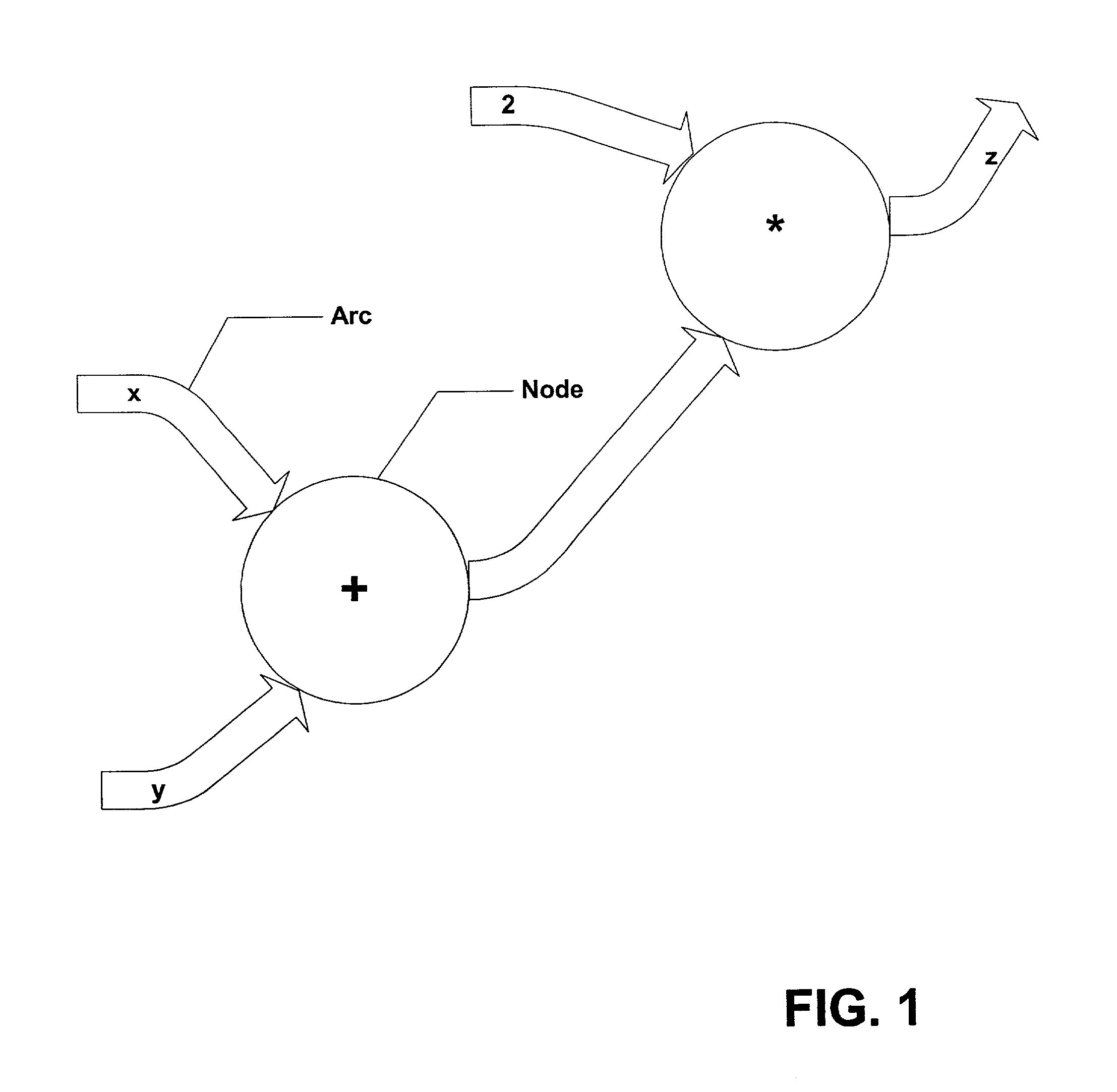Methods and systems for developing data flow programs
a data flow and program technology, applied in the field of multi-processor computer systems, can solve the problems of too complex to be reliably predicted by theory, too dangerous or expensive to be reproduced in a laboratory, and the speed of advanced single-processor computers is too fast to achieve the effect of facilitating development and facilitating developmen
- Summary
- Abstract
- Description
- Claims
- Application Information
AI Technical Summary
Benefits of technology
Problems solved by technology
Method used
Image
Examples
Embodiment Construction
[0059]Reference will now be made in detail to an implementation consistent with the present invention as illustrated in the accompanying drawings. Wherever possible, the same reference numbers will be used throughout the drawings and the following description to refer to the same or like parts. Certain aspects of the present invention are summarized below before turning to Figures.
[0060]Methods, systems, and articles of manufacture consistent with the present invention enable programmers to develop new data flow programs and to convert existing control flow programs to the data flow paradigm. To that end, the methods, systems, and articles of manufacture may implement a data flow program development tool.
[0061]Data flow programs developed in accordance with the principles of the present invention may be executed on a multiprocessor computer system or a distributed computer system using the data flow model. The development tool may execute on the same or different data processing sys...
PUM
 Login to View More
Login to View More Abstract
Description
Claims
Application Information
 Login to View More
Login to View More - R&D
- Intellectual Property
- Life Sciences
- Materials
- Tech Scout
- Unparalleled Data Quality
- Higher Quality Content
- 60% Fewer Hallucinations
Browse by: Latest US Patents, China's latest patents, Technical Efficacy Thesaurus, Application Domain, Technology Topic, Popular Technical Reports.
© 2025 PatSnap. All rights reserved.Legal|Privacy policy|Modern Slavery Act Transparency Statement|Sitemap|About US| Contact US: help@patsnap.com



